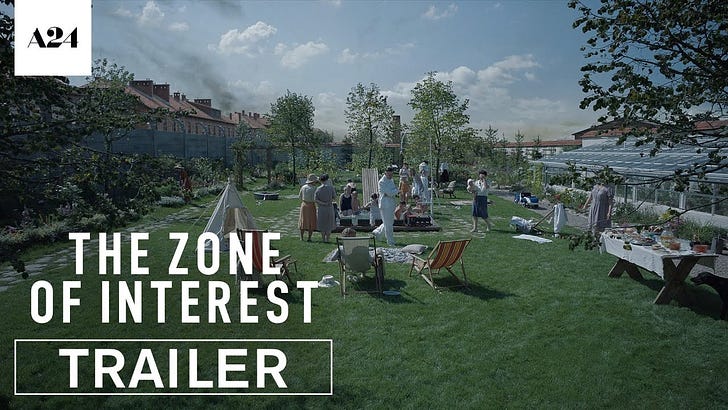‘Diegetic sound’ is a term to describe noises that originate inside the world of a film. It is distinguished from, for example, a musical score, which adds emotional intensity but is not mistaken for anything happening within the story or reality presented in the film. In an interview with Jonathan Glazer, director of the film The Zone of Interest, Sean O’Hagan describes how powerful diegetic sound can be even when the reality of what it represent is not visible on the screen:
In a film haunted by absences, the suffering of the victims is powerfully evoked by [the] soundscape: the constant hum of machinery, the barked orders of SS guards and the cries and screams of prisoners herded towards the gas chambers. “There are, in effect, two films,” elaborates Glazer. “The one you see, and the one you hear, and the second is just as important as the first, arguably more so. We already know the imagery of the camps from actual archive footage. There is no need to attempt to recreate it, but I felt that if we could hear it, we could somehow see it in our heads.”
To this end, [the sound designer Johnnie] Burn spent a year researching and amassing a vast sound archive. “It was essentially a document of every single sound that would have emanated from the camp,” which, he says “was a place of heavy industry as well as human suffering.” The task was “incredibly difficult”. “I remember saying to my wife after just a few weeks that it was starting to get to me. And, even though you don’t ever see the horror, it is by far the most violent film I have ever worked on.”
The interview, which is striking throughout and, I think, well worth reading, concludes with this from Glazer:
“The reason I made this film is to try to restate our close proximity to this terrible event that we think of as in the past. For me, it is not ever in the past, and right now, I think something in me is aware – and fearful – that these things are on the rise again… The road that so many people took is a few steps away. It is always just a few steps away.”



